Earlier considered the common man’s food, now a delicacy, Zhunka Bhaakar (or Pithla Bhakri) is synonymous with everyday Maharashtrian food. What does someone born and brought up in Madhya Pradesh – the land of wheat – closely connected to the spicy food of Vidarbha do? They ‘Raavanize’ the Zhunka and make a crusty wheat Gaakar instead of the Millet-ary Bhaakar.
When, as kids, my sister and I would demand ‘kuch achcha khaana’ (some special food) from mother, she would often pamper us with ‘Raavan Pithla and Gaakar’. Our definition of ‘achcha khana’ was something spicier and oiler than everyday food.
My hometown Indore, in central Madhya Pradesh (MP) – once a princely state ruled by the Maratha dynasty of Holkars – has a considerable Marathi speaking population. From the varied regional cuisines of Maharashtra, what influenced the cuisine of the Marathis in MP were naturally from the Maharashtrian regions bordering Madhya Pradesh, viz. Khandesh (Dhule, Jalgaon etc.) and Vidarbha (Nagpur, Amaravati etc.). These cuisines are characterized, among other things, by high spice levels and generous use of oil that leave a ‘tarri’ – a floating layer of spicy oil on top of a lot of their dishes.
Pithla-Bhakri or Zhunka Bhaakar is an everyday food in Maharashtra and North Karnataka, attributed to regionally available ingredients, affordability, and a filling meal. Pithla is a slurry of besan (chickpea flour) cooked with onions and spices. Each region and household has a different way of making it. If it is runnier, it is Pithla and a slightly drier version of it is Zhunka. The Pithla is generally accompanied by Bhakri – a flatbread made of millets or rice flour.
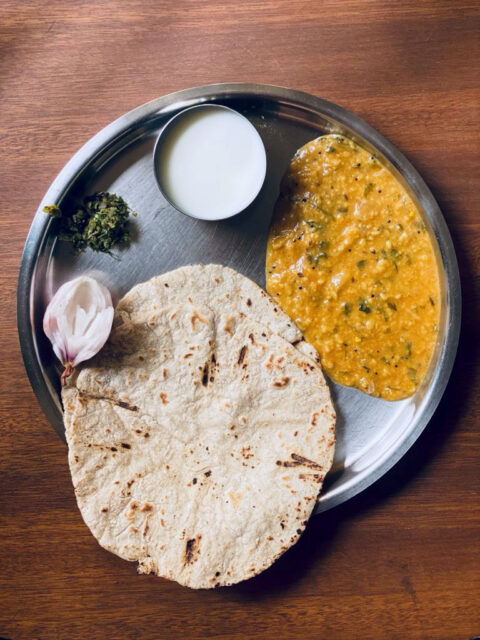
‘Raavan’ Pithla is a Vidarbha specialty and the name aptly defines the dish. With red chilli powder and oil added in the same proportion as chickpea flour, it is fierce like the demon king Raavan, the chief antagonist in the Indian epic, Ramayana. The flour and red chilli powder mixed with salt and turmeric is made into a slurry with water. This slurry is then cooked in a basic tempering (equal quantity of oil, remember) of asafoetida and mustard seeds.
The roots of this dish are rural. It is said that in olden days ‘Raavan Pithla’ was made when there were unannounced guests at home. Smaller quantity would suffice because like in the Ramayana, no ordinary man or monkey could take on the mighty Raavan!
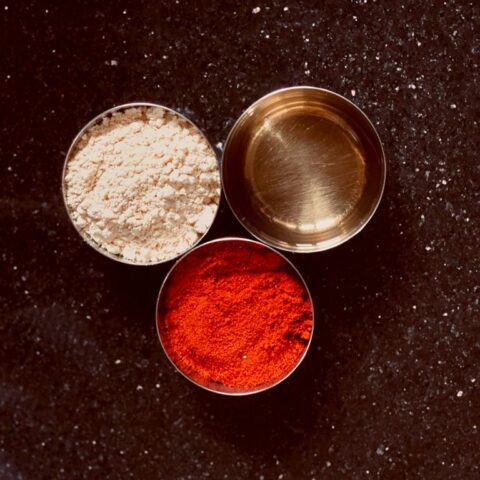
With Raavan conquered, let’s move over to the Gaakar. As one can guess, our breads in MP are wheat dominated. Apart from the wheat flour, there is a Baafla Atta – a grainier version of the wheat flour. The name is derived from its most common usage, to make Baafla – steamed and fire roasted balls of wheat, eaten with dal. Marathis in MP use this local coarse wheat flour to adapt a variety of dishes from Maharashtrian cuisine. A classic example is Thalipeeth (a spiced patted roti), which in Maharashtra is generally made with ‘bhajani’ (flour made of roasted mix of grains and pulses).
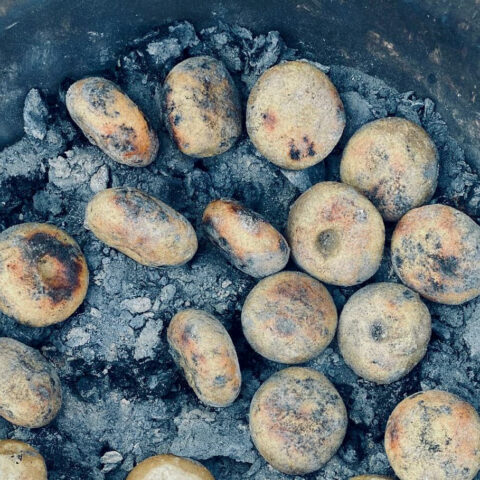
Gaakar, a crusty bread, is our family favorite accompaniment to Raavan Pithla and is made using a combination of Baafla Atta and regular wheat flour. The name Gaakar probably originated as a short form of Gavhachi Bhaakar (literally, Bhakri made of wheat).
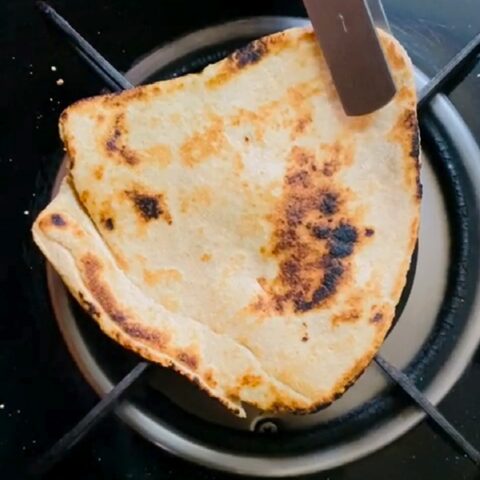
The dough is kneaded hard with some salt and oil. It is rolled out with folds like a regular paratha but much thicker. It is roasted on a griddle and then directly on a flame to get the charred flavour. Once it is done, it is slightly crushed by hands and smeared with ghee (clarified butter). Besides Raavan Pithla, Gaakar also pairs well with ‘Vangyache Bharit’ (roasted smashed aubergine cooked with onion and spices; a Khandeshi cousin of Baingan Bharta).
MP’s Gaakar too has its cousins elsewhere. Maharashtra has ‘Ukhrya’, which is made in a similar way only with regular wheat flour, and generally eaten with ghee and sugar. I learnt from Shanti Petiwala, who does the popular Bohri food pop-ups, that ‘Gakhar’ also is a traditional Bohri bread served with Dal Ghosht or Ghosht ni Tarkari. Shanti recently had this traditional delicacy as a part of her Ramzan menu.
The demand of ‘Mumma, I want to eat something spicy’ leads to Raavan Pithla and Gaakar now, in my home.
While my mother and grandmother introduced me to the concept of Raavan Pithla, I am not sure if back then they really followed its exact proportions or toned it down for us little ones.
I try not to cheat on proportions but do make some adjustments. We take chickpea flour, oil and red chilli powder in equal proportion. And add equal measure of chopped onion, garlic and coriander to balance it.
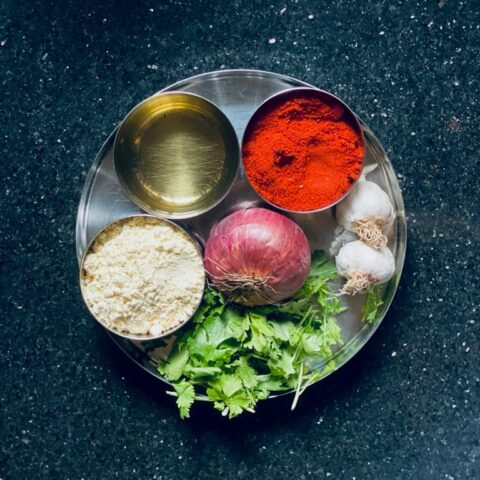
Fiery Ravaan Pithla, smoky, crusty ghee laden Gaakar, need to be accompanied by phodlela kanda – a small onion smashed by hands, very typical accompaniment to rustic Maharashtrian food and copious amounts of buttermilk.
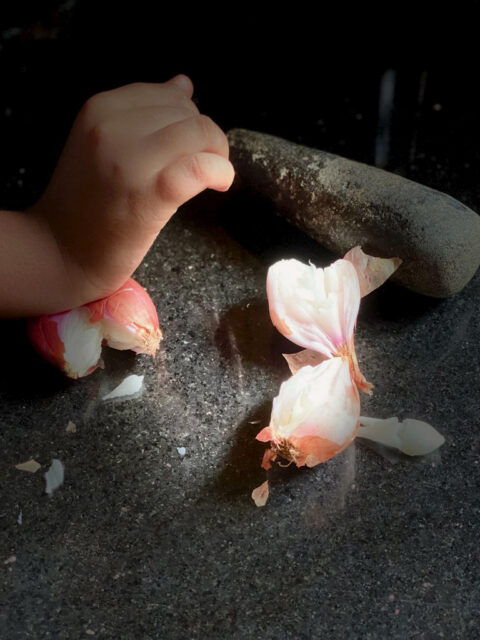
For us this is ‘achcha khaana’ to be put on the cuisine maps of Maharashtra and MP along with their other glamourous delicacies.
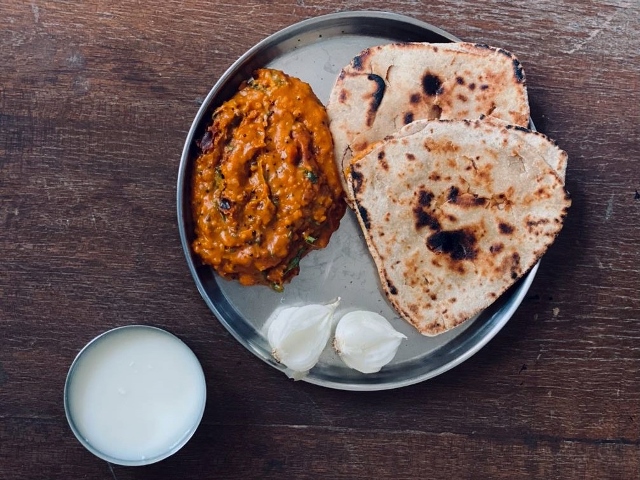
Richa Chitgopekar is a food enthusiast with keen interest in regional and diasporic cuisine. As a Marathi born and brought up in Madhya Pradesh which has a very substantial Marathi speaking population, she feels that the local influences on the food for them are worth exploring. This article is an attempt to bring out one such influence.
Translations and detailed descriptions are provided to give a better understanding of the story to people from different cultural backgrounds across the globe.

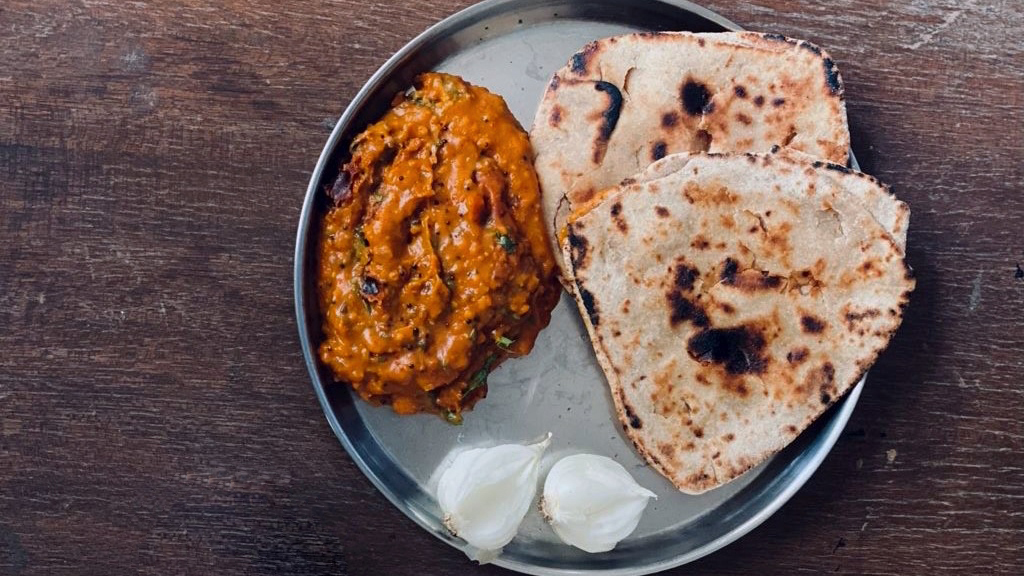
4 comments
Good work. Add videos, if possible
Thank you! 🙂
You can view the Ravan Pithla video on our Instagram profile here: https://www.instagram.com/p/CVCuXe3AzQ9/
Very well written article and published on the appropriate occasion of Dussehra. An extremely novel initiative by Bruite to promote regional cuisines, diverse cultures and different writers.
Thank you for appreciating the effort we invest into bringing out these stories. Many more to come! 🙂